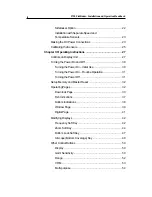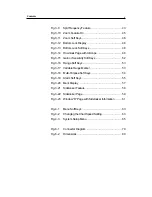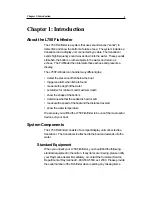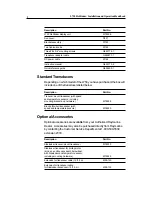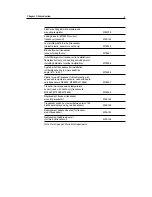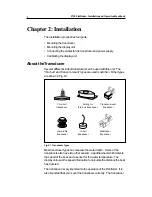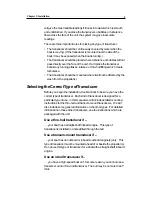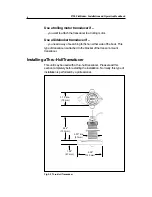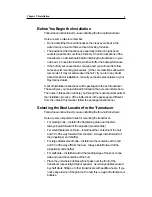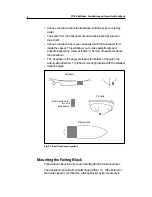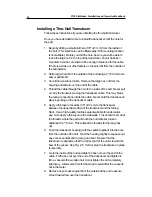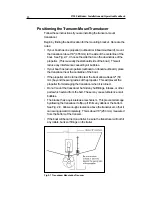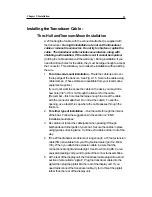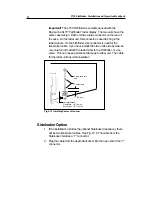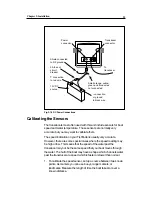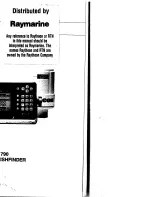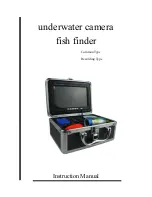
L750 Fishfinder: Installation and Operation Handbook
10
Installing a Thru-Hull Transducer
Follow these instructions if you are installing the thru-hull transducer.
Once you have decided where to install the transducer, drill the hole for
the part.
1. Begin by drilling a small pilot hole (1/8" or 3 mm) from the inside of
the hull. (This small hole can be filled easily if the mounting location
is not suitable.) Before you drill the hole, be sure you will be able to
reach the large nut on the top of the transducer, once it has been
mounted. Also be sure there will be enough clearance for the cable.
If there is a strake or other feature on the hull, drill from the outside of
the hull instead.
2. Drill a larger hole from the outside of the hull using a 2" (50 mm) hole
saw or paddle bit.
3. Uncoil the transducer cable. Remove the large hex nut from the
housing and slide it over the end of the cable.
4. Thread the cable through the hole to the inside of the hull. Never pull
or carry the transducer using the transducer cable. This may break
the wiring connections inside the cable. Never hold the transducer in
place by pulling on the transducer cable.
5. Apply a thin layer of sealant (1/8" or 3 mm) to the transducer
between the upper flat surface of the transducer and the fairing
block. Use a high-quality marine sealant suitable for underwater
use. Also apply a thin layer up the side walls. This should cover all of
the threads where the part will touch the hull material, plus an
additional 1/4" (6 mm). This will seal the threads for the large hex
nut.
6. Push the transducer housing (with the sealant applied) into the hole
from the outside of the hull. Twist the housing slightly to squeeze out
any excess sealant and to get a good seal. Be sure that the
transducer is aligned so that the correct part of the unit is toward the
bow of the vessel. See Fig. 2-5. Hold or prop the transducer in place
temporarily.
7. Go to the inside of the hull and slide the hex nut over the end of the
cable. Fit the hex nut over the end of the transducer and tighten it.
(On a vessel with a wooden hull, do not tighten the nut completely
right away. Allow some time for the wood to swell after the vessel is
put in the water.
8. Remove any excess sealant from the outside of the unit to assure
smooth water flow over the transducer.

